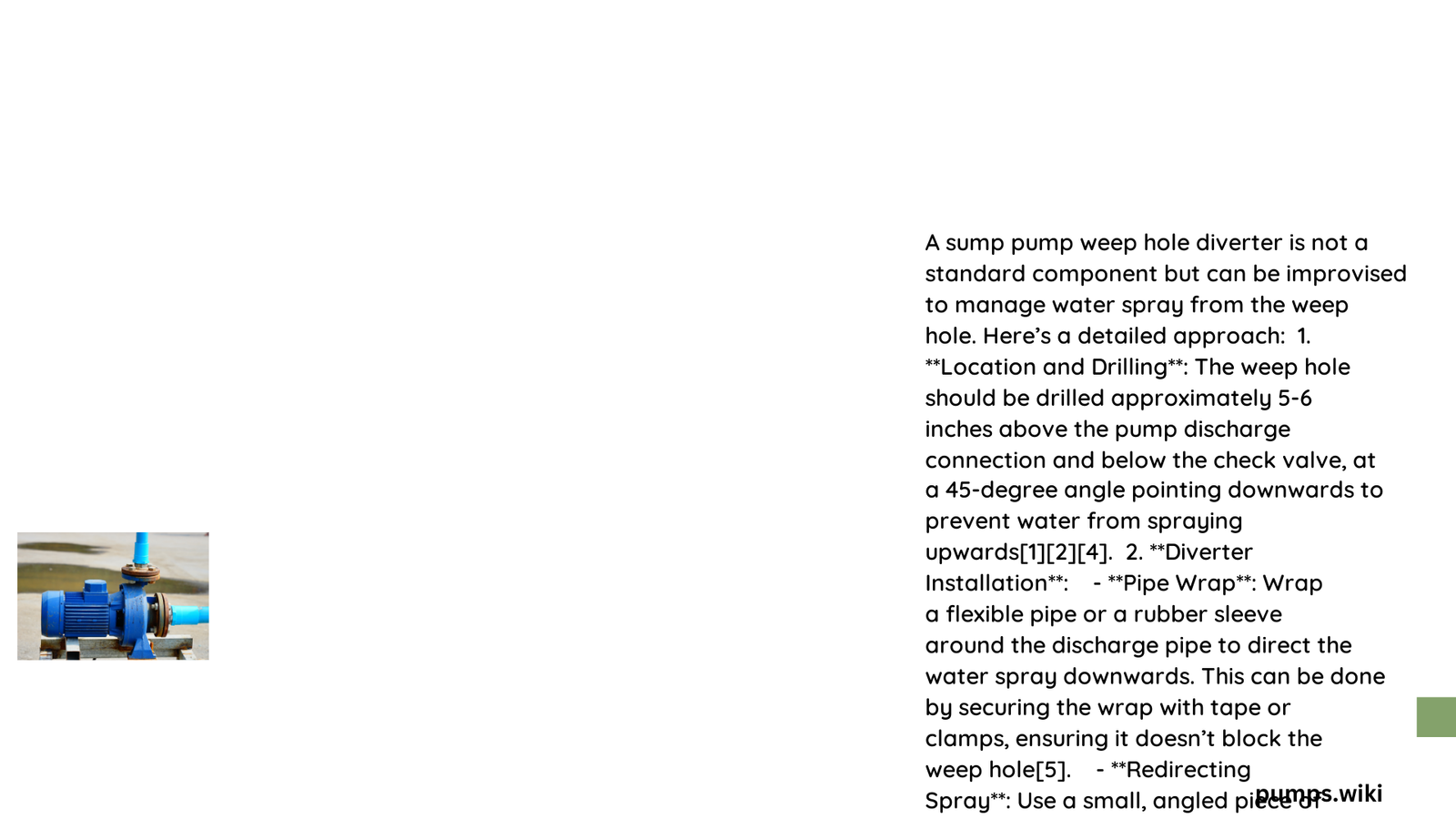A sump pump weep hole diverter is a critical component in preventing air lock and ensuring efficient water drainage from your basement. By strategically drilling a small hole in the discharge pipe, homeowners can eliminate trapped air, reduce pump strain, and maintain optimal water removal performance, ultimately protecting their property from potential water damage and flooding risks.
What is a Sump Pump Weep Hole Diverter?
A sump pump weep hole diverter is a simple yet ingenious solution designed to prevent air accumulation in sump pump discharge pipes. This small, precisely drilled hole allows trapped air to escape, ensuring continuous and efficient water pumping.
Why Do You Need a Weep Hole Diverter?
| Problem | Solution | Benefit |
|---|---|---|
| Air Lock | Weep Hole | Prevents Pump Failure |
| Water Accumulation | Proper Drainage | Reduces Flooding Risk |
| Pump Inefficiency | Air Release Mechanism | Improves System Performance |
How to Install a Sump Pump Weep Hole Diverter?

What Are the Key Installation Requirements?
- Location Selection
- Drill 5-6 inches above discharge connection
- Position below check valve
-
Ensure 45-degree upward angle
-
Drilling Specifications
- Use 1/8 or 3/16 inch drill bit
- Drill at precise 45-degree angle
- Ensure downward water direction
What Tools Do You Need?
- Drill
- 1/8 or 3/16 inch drill bit
- Measuring tape
- Marker
- Safety glasses
- Work gloves
What Are Common Weep Hole Diverter Challenges?
How to Prevent Installation Mistakes?
Homeowners often encounter several challenges when installing weep hole diverters:
- Incorrect Angle: Drilling at the wrong angle can cause water spray
- Size Inconsistency: Using incorrect drill bit diameter
- Positioning Error: Drilling too high or low on discharge pipe
Maintenance Best Practices
How Often Should You Check Your Weep Hole?
- Inspect every 3-6 months
- Clean with small wire or drill bit if clogged
- Check for debris or mineral buildup
- Ensure unobstructed air release
Advanced Troubleshooting Tips
What If Your Weep Hole Isn’t Working?
- Check for visible blockages
- Verify correct drilling angle
- Ensure pipe integrity
- Consider professional inspection if persistent issues occur
Technical Considerations
What Are Compatibility Factors?
- Most sump pumps support weep hole diverters
- Follow manufacturer’s specific guidelines
- Some modern pumps have built-in air release mechanisms
Cost and Investment
What Are the Financial Implications?
- DIY installation: Minimal cost (under $20)
- Professional installation: $50-$150
- Potential savings from preventing water damage: Thousands of dollars
Safety Recommendations
How to Ensure Safe Installation?
- Wear protective equipment
- Disconnect power before working
- Use proper drilling techniques
- Consult professional if uncertain
Conclusion
A sump pump weep hole diverter represents a small but crucial investment in home maintenance. By understanding its function, installation, and maintenance, homeowners can significantly reduce the risk of basement flooding and protect their property’s structural integrity.
